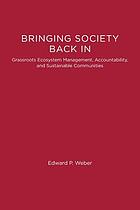
After the Rio Earth Summit in 1992, described above, many hoped that the participating countries would cooperate to end climate change. This did not come to pass. In Reason in a Dark Time: Why the Struggle against Climate Change Failed—and What It Means for Our Future, Dale Jamieson considers why the effort fell apart in Copenhagen in 2009. Jamieson claims the problems derived from the failure of the United States Congress to form an intelligent policy to deal with domestic pollution or to ratify any treaties about climate change. The source of resistance, Jamieson writes, was climate change denial among Republicans in the House of Representatives.
A climatologist with the Intergovernmental Panels on Climate Change, Raymond Bradley writes in Global Warming and Political Intimidation: How Politicians Cracked Down on Scientists as the Earth Heated Up that conservative politicians in the United States attacked him, both dismissing his research and discrediting him personally. Bradley began work on climate change in the 1970s when he realized the Earth’s atmosphere was getting hotter as a result of industrial development. The attacks began in 1998, when Bradley and two other scientists published, in the journal Nature, the results of careful studies showing that the temperatures in recent years had been the warmest in a thousand years. Bradley contacted other scientists and confirmed that they had received similar treatment from conservative politicians who sought to frustrate environmental protection.
Political resistance to sustainable development can be unseemly. In Merchants of Doubt: How a Handful of Scientists Obscured the Truth on Issues from Tobacco Smoke to Global Warming, Naomi Oreskes and Erik Conway describe how a small group of scientists made a business of casting doubt on reputable studies that showed the need for environmental protection. Oreskes and Conway claim that from 1979 to 1985 a few scientists worked for the tobacco companies to discredit the scientific evidence that smoking caused cancer, in order to protect tobacco companies from litigation and legislation. By the 1980s, the same scientists began to raise doubts about global warming for similar suspect reasons.
Over the years, many commentators have contended that nature can remedy the damage human beings cause. Gordon Whitney noted, in From Coastal Wilderness to Fruited Plain: A History of Environmental Change in Temperate North America, 1500 to the Present, that some theorists claimed that forests had always suffered damage and that nature was the forest’s worst enemy. Whitney disagrees and supports that position with an extensive accounting of the ways Europeans destroyed the forests and grasslands of eastern North America to an extent theretofore unparalleled in history. The result was that, by the end of the twentieth century, nothing in those areas was natural.
In Eaarth: Making a Life on a Tough New Planet, Bill McKibben argues that unrealistic ideas of growth and material comforts unleashed the industrial production that has led to the global warming that will result in destruction of the planet. McKibben claims his book as part of his 350.org, a grassroots effort that seeks to force change through political activism and personal choices (small-scale agriculture, home gardens, and so on). Reviewing McKibben’s book in The New York Times, Paul Greenberg complained that McKibben’s alternatives sounded like the list that Christian Lander ridiculed in Stuff White People Like.[1][2] Greenberg’s point was that the list has more to do with a particular lifestyle than with a social movement. Edward Weber’s Bringing the Society Back In offers three case studies that reveal how accountability works in decentralized governance arrangements. In these cases, the citizens worked together to manage such things as public lands and sought to achieve broadly supported results.
Historian Adam Rome’s The Bulldozer in the Countryside: Suburban Sprawl and the Rise of American Environmentalism looks at the extensive destruction of forests, hills, creeks, and farmland resulting from suburban development after World War II, and how those changes made clear what was happening to natural surroundings. According to Rome, environmentalists worried about the quality of life in urban areas, and they borrowed political arguments from the conservationists, who were concerned about the ways private ownership of the land led to its exploitation. Other authors complain that the ubiquity of suburban developments in the United States causes problems for the healthy growth of children. Pamela Riney-Kehrberg argues in The Nature of Childhood: An Environmental History of Growing Up in America since 1865 that the organization of suburban life deprived children of opportunities to explore their neighborhoods independently. In her own childhood, she spent unsupervised time in the High Line Canal, a recreation area in Denver, where she encountered some danger on her own. Many such open spaces have since been filled in by developers, and children have spent their free time within the constraints of playgrounds and on computers and in front of televisions. Life on the Brink: Environmentalists Confront Overpopulation, edited by Philip Cafaro and Eileen Crist, makes the argument that environmental destruction in the United States is due to overpopulation and that population must be stabilized. In their contribution to the collection “The Environmental Argument for Reducing Immigration into the United States,” Cafaro and Winthrop Staples blame immigration for population growth in the United States. They claim that immigration leads to the destruction of forests and farmland for housing. They further claim that Americans consume more goods than other countries and the increase in the number of immigrants in the United States leads people in other countries to clear land to produce foodstuffs for the United States.
[1] Paul Greenberg, “Hot Planet, Cold Facts,” The New York Times Sunday Book Review, May 7, 2010, http://www.nytimes.com/2010/05/09/books/review/Greenberg-t.html
[2] Christian Lander, Stuff White People Like: The Definitive Guide to the Unique Taste of Millions (Random House Trade Paperbacks, 2008).
 Bringing society back in: grassroots ecosystem management, accountability, and sustainable communities
by
Bringing society back in: grassroots ecosystem management, accountability, and sustainable communities
by